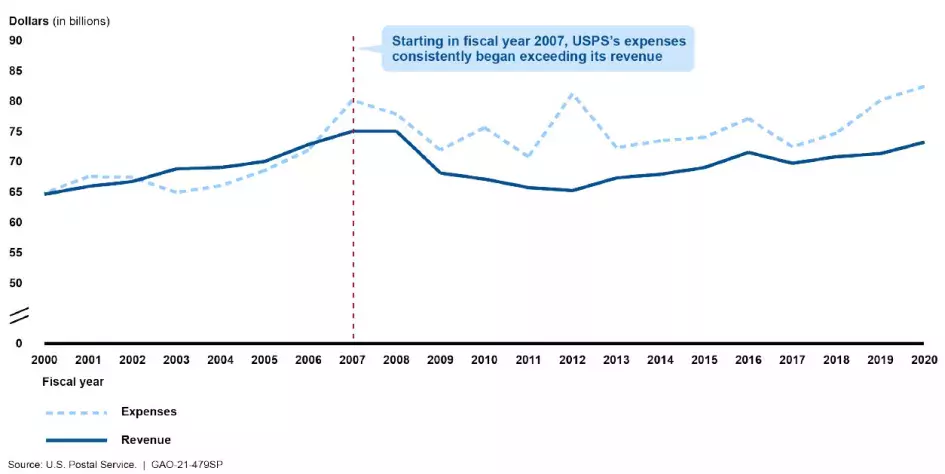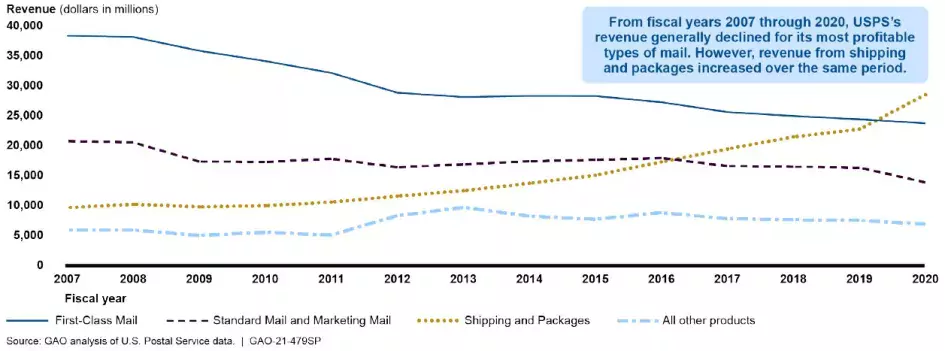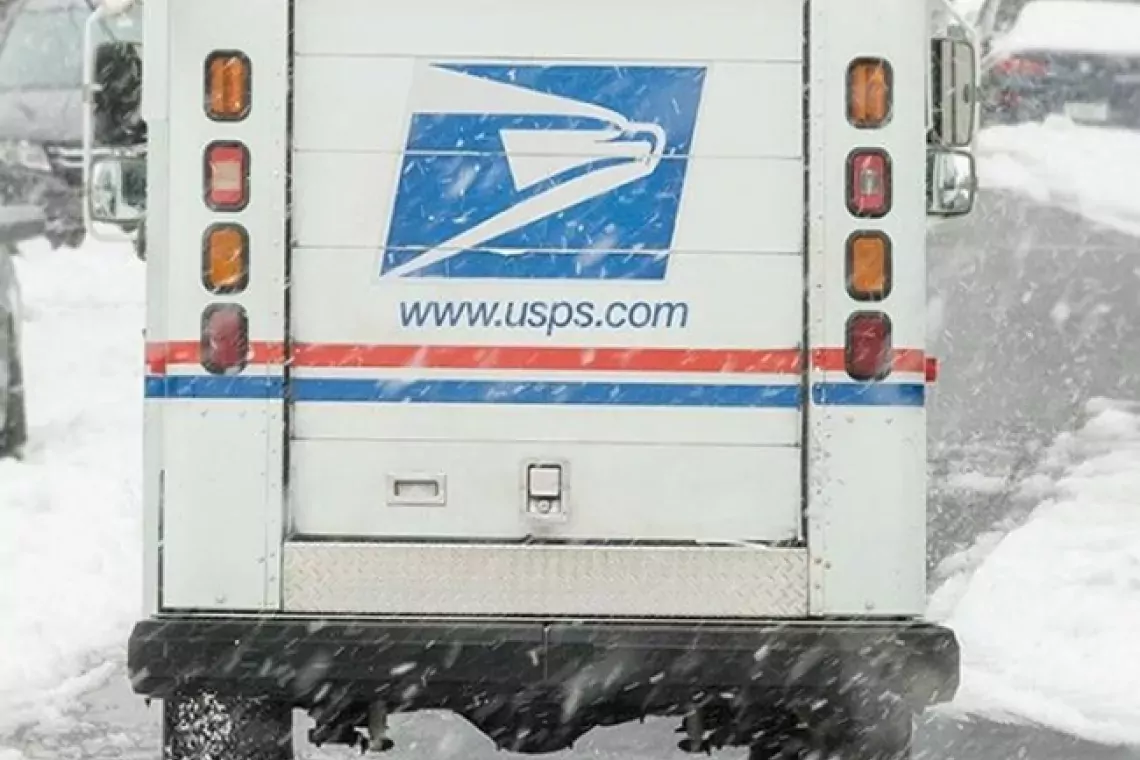The U.S. Postal Service’s Financial Woes and Some Actions That Could Fix It (video)
The U.S. Postal Service plays a critical role in the nation’s communication and commerce. It’s also the largest postal service in the world, delivering an estimated 49% of all mail sent globally. Despite this, USPS faces challenges that threaten its financial viability, which is why it’s on our High Risk List.
Today’s WatchBlog post and the video below explore these challenges and potential actions to address them.
The cost of universal service
USPS is required to provide universal service, delivering to the entire U.S. population—including remote areas that other delivery services exclude because serving them is not profitable. To achieve this reach, USPS maintains the largest physical and logistical infrastructure of any non-military government institution.
USPS has taken some steps to reduce costs of mail delivery activities, but it doesn’t have the authority to make certain other changes that could reduce delivery costs. Specifically, USPS must deliver 6 days a week and operate postal facilities across the country.
Image

USPS’s expenses and revenues
USPS is expected to be financially self-sufficient, meaning that it is supposed to cover its expenses through revenues generated from the sale of its products and services. However, USPS’s revenues do not cover its expenses. And its expenses are growing faster than its revenues, in part due to rising compensation and benefits costs combined with continuing declines in volume for First-Class Mail—USPS’s most profitable product.
USPS’s Expenses and Revenues, FY 2000 to 2020
Image

Employee compensation makes up the vast majority of USPS’s operating expenses (77% in FY 2020), but USPS is limited in how it can address these costs. Employee compensation includes things like labor costs, retirement and health benefits, and more.
Employee-related costs are driven by a mix of USPS contracts and policies (including collective bargaining agreements negotiated with unions that represent approximately 90% of USPS’s employees), and legal requirements on employee pay, benefits, and retirement/pension programs.
Without legislative changes to give USPS flexibility to control certain costs, USPS has reported that it does not have the financial resources to carry out its primary mission. The Postal Service also said it is unable to make certain required federal payments to fund retiree health and pension benefits. Through FY 2020, USPS did not make $63.25 billion in these required retiree and pension benefits. And USPS officials said the Postal Service has deferred some capital spending and infrastructure modernization efforts, like replacing its aging delivery vehicles, because of these costs.
The Postal Service’s primary source of revenue is its delivery of mail and packages, but mail delivery revenues have declined in recent years. Also, USPS is subject to regulatory price caps on some of its products like First-Class Mail and Marketing Mail. These caps prevent USPS from adjusting prices based on factors that are largely outside of its control, such as inflation.
USPS’s Revenues for Selected Products from FY 2007 to 2020
Image

How is USPS still in business?
USPS has been able to continue operating by increasing its debt and unfunded liabilities—such as not making certain required federal payments to fund retiree health and pension benefits. But this approach is not sustainable going forward.
What can be done?
While USPS has taken a variety of steps to reduce costs—such as providing increased self-service options and reducing facility hours—legal requirements limit its ability to make changes to some services, pricing, and employee compensation and benefits. Further, USPS has been unable to make broad changes to address its financial woes because Congress, USPS, and USPS’s stakeholders—including labor unions, mailers, and competitors—have been unable to agree on how to do so. As a result, no postal reform legislation has been enacted since 2006.
In our new report, we highlight our previous recommendations that Congress should:
- consider reassessing the level of universal postal service that the nation requires;
- consider the extent to which USPS should be financially self-sustaining and what changes to law would be appropriate to allow USPS to meet this goal; and
- consider the most appropriate institutional structure for USPS going forward.
Learn more about USPS’s financial challenges and our recommendations by reading our full report.
- Comments on GAO’s WatchBlog? Contact blog@gao.gov.
GAO Contacts
Related Products

GAO's mission is to provide Congress with fact-based, nonpartisan information that can help improve federal government performance and ensure accountability for the benefit of the American people. GAO launched its WatchBlog in January, 2014, as part of its continuing effort to reach its audiences—Congress and the American people—where they are currently looking for information.
The blog format allows GAO to provide a little more context about its work than it can offer on its other social media platforms. Posts will tie GAO work to current events and the news; show how GAO’s work is affecting agencies or legislation; highlight reports, testimonies, and issue areas where GAO does work; and provide information about GAO itself, among other things.
Please send any feedback on GAO's WatchBlog to blog@gao.gov.




